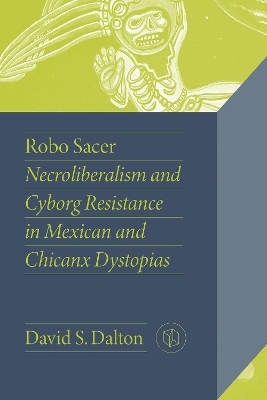
Robo Sacer
Vanderbilt University Press (Verlag)
978-0-8265-0538-5 (ISBN)
Robo Sacer engages the digital humanities, critical race theory, border studies, biopolitical theory, and necropolitical theory to interrogate how technology has been used to oppress people of Mexican descent—both within Mexico and in the United States—since the advent of the North American Free Trade Agreement (NAFTA) in 1994. As the book argues, robo-sacer identity emerges as transnational flows of bodies, capital, and technology become an institutionalized state of exception that relegates people from marginalized communities to the periphery.
And yet, the same technology can be utilized by the oppressed in the service of resistance. The texts studied here represent speculative stories about this technological empowerment. These texts theorize different means of techno-resistance to key realities that have emerged within Mexican and Chicano/a/x communities under the rise and reign of neoliberalism. The first three chapters deal with dehumanization, the trafficking of death, and unbalanced access to technology. The final two chapters deal with the major forms of violence—feminicide and drug-related violence—that have grown exponentially in Mexico with the rise of neoliberalism. These stories theorize the role of technology both in oppressing and in providing the subaltern with necessary tools for resistance.
Robo Sacer builds on the previous studies of Sayak Valencia, Irmgard Emmelhainz, Guy Emerson, Achille Mbembe, and of course Giorgio Agamben, but it differentiates itself from them through its theorization on how technology—and particularly cyborg subjectivity—can amend the reigning biopolitical and necropolitical structures of power in potentially liberatory ways. Robo Sacer shows how the cyborg can denaturalize constructs of zoē by providing an outlet through which the oppressed can tell their stories, thus imbuing the oppressed with the power to combat imperialist forces.
David S. Dalton is an associate professor of Spanish at the University of North Carolina at Charlotte.
Introduction: Defining the Robo Sacer in a Necroliberal World
Part I: DENATURALIZING GREATER-MEXICAN ZOĒ: THE EARLY STAGES OF NAFTA, (1992-2001)
1. Reimagining the Sanctity of Expendable Life: Necroliberal Markets and Secularly Holy Cyborgs in CherrÍe Moraga’s Heroes and Saints and Guillermo del Toro’s Cronos
2. Existing in the Necroliberal Order Online: Robo-Sacer Subjectivity in Pepe Rojo’s “Ruido gris” and Ernest Hogan’s Smoking Mirror Blues
Part II: NAFTA AFTER THE TRANSITION: WORKER EXPENDABILITY IN A NECROLIBERAL AGE (2006-2018)
3. Hacking the Bios: Disposable Braceros and Bare Life in Alex Rivera’s Sleep Dealer and Rosaura SÁnchez and Beatrice Pita’s Lunar Braceros 2125–2148
4. Robo-Sacer Resistance and Feminicide: Gabriela DamiÁn Miravete’s “SoÑarÁn en el jardÍn” and Carlos Carrera and Sabina Berman’s Backyard/El traspatio
5. Guns, Narcos, and Low-Tech Cyborgs: Magical Realism, SF, and the Posthuman in Julio HernÁndez CordÓn’s CÓmprame un revÓlver and Rudolfo Anaya’s ChupaCabra Trilogy
Conclusion. The Limits of Robo-Sacer Resistance
| Erscheinungsdatum | 04.05.2023 |
|---|---|
| Reihe/Serie | Critical Mexican Studies |
| Zusatzinfo | 11 b&w illustrations |
| Verlagsort | Tennessee |
| Sprache | englisch |
| Maße | 152 x 228 mm |
| Gewicht | 658 g |
| Themenwelt | Geisteswissenschaften ► Sprach- / Literaturwissenschaft ► Anglistik / Amerikanistik |
| Geisteswissenschaften ► Sprach- / Literaturwissenschaft ► Literaturwissenschaft | |
| Sozialwissenschaften ► Soziologie ► Makrosoziologie | |
| ISBN-10 | 0-8265-0538-4 / 0826505384 |
| ISBN-13 | 978-0-8265-0538-5 / 9780826505385 |
| Zustand | Neuware |
| Haben Sie eine Frage zum Produkt? |
aus dem Bereich


